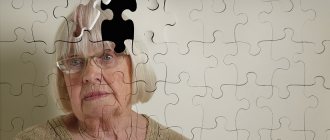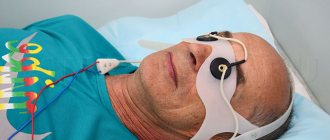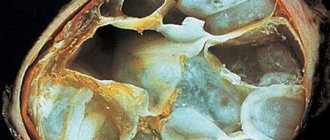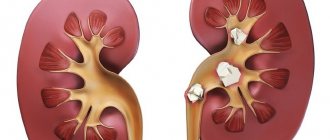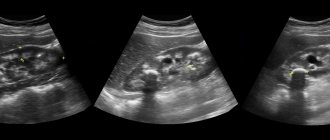General information
Confusion is a pathology in which a person’s ability to navigate in time or space is impaired. At the same time, attention may decrease, and sometimes there are lapses in short-term memory. Such manifestations are associated with impaired brain activity and can be a symptom of both mental and somatic diseases. Various conditions can provoke them: acute intoxication , dehydration, heat stroke , hypothermia, severe stress, etc.
In this state, a person can wander the streets, get confused in time, look lost and distracted. Pathological disorientation often develops in older people suffering from neurodegenerative diseases and brain lesions. If the process progresses, the patient may experience impaired perception and memory, recognition and speech. Emotional disorders, etc. are noted. Neuropsychological and clinical methods are used in the diagnostic process. Treatment is conservative.
The treatment methods and features of this condition will be discussed in more detail in this article.
Confusion
Confusion is symptoms of a person's darkened consciousness, which can be short-term or long-lasting in nature, depending on the underlying factor. This condition can be a manifestation of both a somatic process and a psychological disorder or severe nervous shock. Symptoms:
The following forms of this disorder are distinguished, depending on the etiological factor and the age of the patient: hallucinatory; manic; catatonic; confabulatory; vascular. A separate form of symptom is confusion in older people. In this case, the manifestation of such a disorder may not always be caused by one or another illness; the symptom may be a consequence of age-related changes. Confusion of consciousness can be supplemented by the following symptoms: partial loss of memory, in most cases short-lived - a person may forget what he did or said a few minutes ago, periodically fail to recognize his relatives, passport details and other similar information; the patient may forget all information about himself; disorientation; sudden mood swings - a state of complete peace can be replaced by sudden aggression even towards close people; slow and inconsistent speech; uncontrolled urine output and defecation; sleep disturbance. With cervical osteochondrosis, the above-described clinical picture can be supplemented by the following signs: pain in the heart and chest area; increased sweating; motor dysfunction; weakening of muscle tone.
Treatment:
If confusion is a sign of a serious pathological process, and not a short-term symptom such as post-traumatic psychosis, then hospitalization is required. If possible, someone close to you should stay with the patient. If the patient is in a state of agitation, the doctor may prescribe the following medications: tranquilizers; sedatives; sleeping pills. The drugs are administered intramuscularly, starting with a minimum dose. You cannot use such medications on your own, as this can lead not only to irreversible pathological processes, but also to death. In addition to medication therapy, the patient needs to be provided with complete rest. Since in this state a person is not responsible for his actions, he needs care, including in terms of hygiene. The duration of treatment and basic therapy are individual.
No information posted on this or any other page of our website can serve as a substitute for personal contact with a specialist. The information should not be used for self-medication and is provided for informational purposes only.
The site is maintained by pharmaceutical and medical professionals.
Pathogenesis
To successfully navigate in space, a person must maintain normal cognitive activity, recognize spatial landmarks, mentally imagine and remember space, and distinguish between left and right sides.
When the brain receives visual information, it processes it in the primary projection areas of the occipital cortex. Then it enters the posterior convexital sections, the lateral surface of the temporal lobe. This process allows you to recognize and determine the position of objects.
Short-term memory of space, thanks to which a person moves, is provided by the prefrontal cortex. Consequently, the basis for the pathogenesis of disorientation is the cognitive component, as well as the pathology of the activity of a number of brain structures.
Classification
There are several types of disorientation and confusion.
- Radiation is a consequence of exposure to high doses of radiation.
- Spatial – orientation in place is disturbed, disorientation in space occurs.
- Professional – is a consequence of professional activity.
- Social – a person with such a disorder takes a long time to get used to society and shows anxiety in unusual situations.
From a psychological point of view, the following forms of disorientation are distinguished:
- Autopsychic – a person lacks the perception of personal factors and social affiliation. He cannot reproduce his first name, last name, date of birth, etc. In this condition, the patient perceives the world around him completely differently and does not orient himself in it.
- Allopsychic – a violation of the perception of time and space. The patient may not understand where he is, incorrectly name the time of day, date, month, etc.
- Amnestic - both allopsychic and autopsychic orientation are disturbed at the same time. This disorder is caused by amnesia . In this state, the patient may not recognize himself in the mirror or in photographs. He cannot name his personal data, describe his habits, etc.
- Somatopsychic – the patient does not perceive his own body, mistaking its organs for someone else’s.
- Delusional - a person in this state forgets real events, and he has a false idea of what is happening.
In medicine, the following types of consciousness disorders are also distinguished:
- Stunned state of consciousness - occurs most often, manifests itself in acute disorders of the central nervous system, infectious diseases, and head injury. With such a degree of impairment of consciousness, irritability appears and the formation of associations becomes difficult. The person is indifferent, silent, indifferent, poorly oriented in the world around him. This state can last for several minutes or several hours.
- Delirious clouding of consciousness - the patient develops delusions, illusions and persistent hallucinations . Most often, this happens as a consequence of TBI or the influence of infections.
- Oneiric or dream consciousness - the patient has a correlation between emerging fantastic ideas and a reflection of the real world.
- Delirium – in this condition, a person partially loses memory: fragments of events “fall out” from him.
- Twilight clouding of consciousness - this state is characterized by deep disorientation in space with the preservation of habitual automated actions. After the patient develops a twilight disorder of consciousness, amnesia occurs. This condition appears suddenly. A twilight state of consciousness is usually a short period of disturbance of consciousness that replaces deep sleep. The following types of it are determined: delusional variant (the patient may show aggression, which seems pre-planned. After normalization of the state, actions are perceived as alien to the individual); hallucinatory variant (hallucinatory experiences predominate); oriented option (elementary orientation is preserved); drowsy state (appears after a sharp exit from the slow-wave sleep phase).
- Paroxysmal disorders of consciousness - with this pathology, disorders arise suddenly and stop abruptly. Such attacks are called paroxysms . Paroxysmal disorder manifests itself periodically.
- Depersonalization – this state is characterized by a feeling of alienation, one’s own “I”, one’s thoughts. A person seems to perceive himself from the outside.
There is also a condition called akinetic mutism . This is a condition in which a person completely loses the ability to move and speak and does not respond to painful stimuli.
Main causes of confusion:
- Alcohol withdrawal syndrome
- Drug intoxication
- Encephalitis
- Vascular diseases of the brain
- Alzheimer's disease
- Metabolic disorders
- Hidden bleeding (including intestinal)
- Epileptic twilight states
- Post-traumatic psychosis
- Artificial (post-resuscitation, after several ECT sessions).
Alcohol withdrawal syndrome
Alcohol intoxication is the most common. The state of acute confusion due to drinking large quantities of alcohol is easily recognized. A comprehensive picture of alcohol syndrome should not pose a serious problem for diagnosis. Such patients are usually anxious and agitated, disoriented in time and place, and do not understand the situation in which they find themselves if asked about it. Since the onset of withdrawal syndrome requires a long period of alcohol consumption, upon examination an alcoholic tremor of outstretched arms will be detected. The picture is complemented by the icterus of the sclera and enlargement of the liver upon palpation. The most significant among laboratory studies are data indicating a violation of liver enzymes.
Drug intoxication
Tranquilizing drugs can also lead to intoxication and thus confusion and disorientation. Such patients are not anxious or agitated; rather, there is a decrease in the level of wakefulness. In these cases, ocular symptoms are helpful: many drugs cause nystagmus and pupillary disturbances.
Eye symptoms during intoxication
| Eye symptoms | Cause |
| Miosis | Morphine derivatives Reserpine Meprobamate Acetylcholinesterase inhibitors |
| Midriaz | Belladonna alkaloids Chlorperphenazine Imipramine Botulism Cocaine |
| Nystagmus | Barbiturates Benzodiazepines Difenin |
There may be tremor, but there is no scleral icterus, and laboratory findings are unremarkable. Drug intoxication is usually recognizable on the EEG: frontal (barbiturates) or generalized (benzodiazepines) beta waves or dysrhythmic groups of waves appear mainly in the temporal regions. A urine toxicology test is helpful, but the test is usually long enough to help on the spot. If it is possible to determine the level of antiepileptic drugs in blood serum using an enzymatic method, this also applies to barbiturates and benzodiazepines, the most commonly used drugs. There are also determinants for other psychotropic drugs, such as lithium.
Encephalitis
The next condition in which acute onset of confusion occurs is encephalitis. The presence of any febrile illness before the onset of encephalitis is not necessary. Unfortunately, the first symptoms of the disease—confusion and EEG changes—are quite nonspecific. Neurological signs may not appear immediately. Hyperthermia does not always occur. Pleocytosis in the cerebrospinal fluid has not yet been detected. Only elevated protein levels help suggest a diagnosis of encephalitis. Serological data will be available in a week at the earliest.
Often the diagnosis of encephalitis is made by excluding other possible causes. It is useful to pay attention to the acute onset of fever, headache and impaired consciousness. In case of rapid deterioration of the patient's condition, it is advisable to begin therapy, even when serological confirmation is still lacking.
Vascular diseases of the brain
The subgroup of vascular diseases includes conditions of various etiologies, which are usually easily differentiated. Ischemic stroke is rarely dominated by mental disturbances, while intracerebral hemorrhage may lead to confusion leading to hemiplegia or brainstem syndrome. The diagnosis can be assumed if the patient has suffered from arterial hypertension for a long time. However, this circumstance should not be the only justification for performing a lumbar puncture. An increase in local plus generalized changes in the EEG can confirm the diagnosis, but only neuroimaging examination can accurately establish the diagnosis. The onset of subarachnoid hemorrhage is sudden and usually causes headaches in people who have never experienced confusion before. With very few exceptions, there is neck stiffness. Then other meningeal signs appear. Oculomotor and pupillomotor symptoms and low-grade fever are often detected. During lumbar puncture, blood is detected in the cerebrospinal fluid, which after centrifugation becomes xanthochromic.
In bilateral posterior cerebral artery strokes, vision loss and confusion are common. Anosognosia may occur in acute cortical blindness. Such patients do not respond to visual stimuli; sound stimuli attract the eye, but this is not a very accurate fixation. In addition, patients deny the existence of blindness and describe their surroundings when asked to do so, resorting to confabulations that add to the state of confusion. There is no optokinetic nystagmus.
Multi-infarct dementia may lead to intermittent states of confusion. A series of small (sometimes large) strokes leads to a gradual deterioration of various cognitive functions, such as memory, speech, attention, which forms multi-infarct dementia. Episodes of nighttime confusion are common. Emotionality becomes flattened, complacency appears, and sometimes pathological laughter and crying develop.
In this situation, the next stroke leaves the patient in a state of confusion. Diagnosis is based on a characteristic history and neurological deficit, which corresponds to a lesion in a particular vascular area. Neuroimaging examination reveals residual phenomena of previous strokes.
In practice, it is very important to identify “atherosclerotic” patients who do not have a history of multi-infarct dementia and are completely balanced, reasonable elderly people. Only after, for example, surgery under general anesthesia can they wake up in a state of deep confusion, as well as during any acute illness. MRI reveals signs of previous “silent” infarctions, usually lacunar.
Alzheimer's disease
In contrast, in Alzheimer's disease, neuropsychological deficits progressively progress. It is possible to identify mild neurological symptoms (especially with a mixed type of dementia). At first, emotional reactions were preserved, as were the patients’ usual social skills. The onset of acute confusion is often associated with changes in the patient's life, such as moving, losing a dear family member, or being hospitalized. Neuroimaging data indicate a global decrease in brain volume. Neuropsychological examination confirms the diagnosis.
Metabolic disorders
The state of acute confusion due to metabolic disorders is almost impossible to diagnose at the clinical level. Of course, it is well known that fluttering tremor, that is, asterixis, is observed in pathologies of the liver and kidneys and other metabolic disorders. However, as a rule, the diagnosis is based on laboratory data. In the presence of a state of acute confusion of unknown etiology, screening for metabolic disorders is necessary.
List of main reasons
which, of course, is not complete, includes: diabetes mellitus, Addison's disease, dehydration, hypercalcemia, hyperinsulinism, hyper- and hypoparathyroidism, porphyria, respiratory acidosis and thiamine deficiency, renal and liver failure, chronic lung diseases, etc. Metabolic encephalopathies, such as usually accompanied by a tendency to slow down bioelectrical activity on the EEG.
Hidden bleeding
In this regard, it should be noted that hidden bleeding, including intestinal bleeding, can lead to such a decrease in the number of circulating red blood cells that the result will be global cerebral hypoxia, debuting with a state of confusion without neuropsychological disorders or a decrease in the level of wakefulness. Characterized by pallor and, especially, tachycardia in a sitting position; with intestinal bleeding - black feces. More often, hidden internal bleeding leads to fainting.
Epileptic twilight states
Twilight states of an epileptic nature can occur not only in patients who are aware of their disease, but also after the first attack. They may follow a major seizure or series of seizures. In this case, the patient is disoriented in time and cannot correctly assess the situation. The patient may have delusional disorders, a vague sense of danger, misinterpretation of even neutral movements of surrounding people, and aggressiveness.
With a continuous series of complex partial attacks, aggressiveness is not typical. Patients often move slowly, perform inappropriate actions, and appear to be not fully awake. Diagnostics
is greatly facilitated if there are oral automatisms such as chewing, swallowing, and/or stereotypical hand movements, as is often seen in isolated partial complex seizures. The final diagnosis is based on patient observation and EEG.
Post-traumatic psychosis
The condition of post-traumatic psychosis is often not diagnosed if it occurs when a patient awakens after a post-traumatic loss of consciousness in the surgical department. Characteristic features are anxiety, restlessness and an illusory, impaired interpretation of the environment. Patients tend to leave their bed or even leave the ward, despite strict instructions to adhere to bed rest. This is often regarded as a violation of the regime, and the pathological nature of the condition is not recognized.
Artificial state of confusion
Sometimes, in a post-resuscitation state or after several sessions of electroconvulsive therapy, a transient state of confusion develops with disorientation and inappropriate behavior.
Causes of confusion
The reasons why disorientation and confusion occur can be quite varied. Most often, these manifestations are caused by the following factors:
- Alcohol intoxication , a disorder of consciousness associated with taking large doses of alcohol, is easy to recognize. Such people show disorientation, anxiety, and lack of understanding of the situation in which they find themselves.
- Intoxication due to taking medications - with this condition, a person’s level of wakefulness decreases. Taking many drugs provokes pupillary disturbances and nystagmus .
- Encephalitis - confusion in this disease manifests itself acutely. However, such manifestations are nonspecific, so the disease can be diagnosed through tests and research.
- Vascular diseases of the brain - intracerebral hemorrhage, etc. can lead to confusion.
- Multi-infarct dementia - with this condition, periodic attacks of confusion occur.
- Alzheimer's disease is a chronic symptom, and acute confusion in such a disease often occurs with sudden changes in the patient's life.
- Metabolic disorders - confusion can occur in various diseases associated with metabolic disorders.
- Epilepsy is a confused state that can develop after a seizure or series of seizures.
- Hidden bleeding leads to the development of hypoxia , which is the cause of disorientation.
- Post-traumatic psychosis – after trauma, disturbances in the interpretation of what is happening around, anxiety, and anxiety are possible.
- Mental disorders.
- Traumatic brain injuries.
URGENT CARE. CONFUSION AND COMA
RMJ opens a permanent section - emergency assistance pages. The goal of our magazine is to provide a practicing doctor of any specialty with an algorithm of actions in urgent situations. An emergency is a case where there is no time for long deliberation. It is good to think, read and analyze before and after a critical situation, and during it you need to act quickly and competently. Due to the acute shortage of time, there is no opportunity to consult with colleagues or look for reference literature. In such situations, an algorithm, or a plan of standard actions, is needed. The algorithm should be simple and understandable (therefore easy to remember), as well as standard and generally accepted (independent of the views of various medical schools). The algorithm is the “skeleton” that later, when there is more time, “will be overgrown with meat.” The doctor’s tactics in an emergency situation consist of the following main stages:
We hope that you will perceive the new section with interest, and we, in turn, will gratefully accept your wishes
CONFUSION AND COMA
ABOUT
The assessment of disturbances of consciousness goes in two directions: whether there is a violation of the content of consciousness and/or its level. Confusion (blackout) of consciousness is a lack of clarity of thinking with the inability to concentrate on external stimuli. Behavior becomes unfocused, and disorientation in place, time and person is possible. Stupor (stupor in American terminology) and coma are disturbances in the level of consciousness. Stupor is a deep depression of consciousness, in which defensive reactions (movements in the limbs, opening of the eyes) can only be achieved by strong external stimuli. Patients in a coma cannot be awakened by any, even very strong (painful) stimuli. In elderly patients, relatively mild medical illness can lead to confusion (risk of overdiagnosis of dementia). At night, the condition of patients with confusion worsens. In the diagnosis of confusion and coma, anamnesis collected from relatives or neighbors is extremely important. Until the cause of the condition is determined, the use of sedatives should be avoided.
Confusion
Isolated confusion usually indicates a metabolic disorder, but other causes are possible.
Causes :
- overdose of drugs (usually alcohol, drugs, tranquilizers, barbiturates, antidepressants, antipsychotics, anticholinergics);
- withdrawal syndrome of alcohol (the most severe form is delirium tremens), barbiturates, opiates;
- metabolic disorders (uremia, liver, heart and pulmonary failure, water and electrolyte disorders, anemia, porphyria);
- endocrine diseases (hypo- or hyperthyroidism, hypo- or hyperglycemia, parathyroidism, adrenal dysfunction);
- vitamin deficiency (especially thiamine);
- cancer intoxication;
- infections (systemic and central nervous system);
- vascular lesions of the brain (severe arterial hypertension, ischemic hemispheric stroke, subarachnoid hemorrhage, collagenosis);
- traumatic brain injury;
- volumetric brain lesions (tumors, chronic subdural hematoma, abscess);
- condition after a convulsive seizure;
- poisoning with CO, bromides, corticosteroids;
- dementia;
- surdomutism.
Coma
It is fundamentally important to resolve the following questions: whether there is focal or diffuse brain damage; in the case of diffuse damage, it is metabolic or structural, and in the case of focal damage, it is supra- or subtentorial.
| Points | Motor reactions | Speech reaction | Opening your eyes |
| 6 | Executes on command | — | — |
| 5 | Purposeful repulsion of a stimulus | Correct speech | — |
| 4 | Unfocused defensive reaction | Confused speech | free |
| 3 | Abnormal flexion of the upper extremities in response to a painful stimulus | Meaningless words | In response to a shout |
| 2 | Tonic extension to a painful stimulus | Inarticulate sounds | In response to pain |
| 1 | None | Absent | Absent |
Causes
1. Metabolic - overdose of drugs (usually narcotics, sedatives, psychotropics, hypnotics) and alcohol; ischemia/hypoxia; diabetic comas; hypoglycemia; cardiac, respiratory, renal and liver failure; hyponatremia, hypercalcemia; sepsis; Wernicke's encephalopathy; CO poisoning. 2. Diffuse brain damage - trauma (concussion, diffuse axonal damage); meningitis; encephalitis; subarachnoid hemorrhage; epilepsy; hypertensive encephalopathy; cerebral malaria. 3. Focal damage to the cerebral hemispheres with compression of the brainstem - intracerebral hemorrhage; subdural and/or epidural hematoma; tumor; abscess. 4. Damage to the brainstem - brainstem infarction; hemorrhage; tumor; abscess; cerebellar infarction/hemorrhage. 5. Hysteria. It is extremely important to assess the level of consciousness over time (for the continuity of stages of assistance and predicting the outcome). The Glasgow Coma Scale is best suited for these purposes. The maximum number of points is 15, which corresponds to clear consciousness, the minimum is 3, which corresponds to extreme coma. Stupor - 7-9 points, coma - 6 points or less.
Emergency measures for coma
1. Ensure airway patency and adequate ventilation (elimination of obstruction, intubation, mechanical ventilation). 2. Hemodynamic control. Catheterization of a vein to infuse fluids and medications. 3. Thiamine (vitamin B1) 100 mg IV, then 50 ml of 50% glucose IV. Naloxone 0.4 mg IV.
Symptoms of confusion
The main symptoms of confusion are disorientation in space and time.
- A person is often unable to remember events that just happened.
- Attention is impaired and confusion is noted.
- The body's reactions slow down.
- Inappropriate emotions are possible.
- When intoxicated, confusion often accompanies tremors , eye symptoms, and a decrease in temperature.
- With TBI drowsiness , lethargy , headaches , convulsions , and coordination problems are possible.
- When spatial disorientation occurs, a person loses the ability to imagine how objects are located relative to his body and does not recognize the objects that surround him.
Content
- 1 Main causes of confusion: 1.1 Alcohol withdrawal syndrome
- 1.2 Drug intoxication
- 1.3 Encephalitis
- 1.4 Vascular diseases of the brain
- 1.5 Alzheimer's disease
- 1.6 Metabolic disorders
- 1.7 Hidden bleeding
- 1.8 Epileptic twilight states
- 1.9 Post-traumatic psychosis
- 1.10 Artificial state of confusion
Tests and diagnostics
The examination is carried out by a psychiatrist or neurologist. The following diagnostic methods are used during the research:
- Patient interview . During the interview, the doctor determines the presence of symptoms, their characteristics and duration.
- Neurological examination . The specialist determines whether focal and cerebral symptoms are present.
- Neuropsychological examination.
- General and biochemical blood test . Allows you to establish or exclude acute intoxication and infection.
- MRI . It is carried out to determine organic changes in the brain and blood flow disorders.
- EEG . Characteristic signs of epilepsy .
Diagnostics
If you are confused, you should consult a therapist. After the initial examination, the doctor, if necessary, will refer the patient to a psychiatrist or carry out further treatment together.
An initial examination of the patient with anamnesis is required. The conversation with the patient should take place together with a loved one who can specifically answer some of the doctor’s questions.
To determine the root cause factor, the following laboratory and instrumental examination methods may be prescribed:
- blood sampling for general and biochemical analysis;
- general urine analysis;
- ECG;
- Ultrasound of internal organs;
- Dopplerography of blood vessels;
- EEG;
- CT;
- MRI;
- consultation with a psychiatrist.
Computed and magnetic resonance imaging
In any case, no matter what the supposed etiological cause of the violation of a person’s clarity of consciousness, consultation with a psychiatrist, even for preventive purposes, is mandatory.
First aid
If consciousness is impaired, it is necessary to provide adequate first aid and, if necessary, call an ambulance. It is important to consider that signs of disorientation may indicate the development of serious illnesses. Sometimes confusion is a sign of a developing stroke . If there is such suspicion, a doctor should be called immediately. If a person has difficulty breathing, they need to remove tight clothing and provide fresh air. It is better that before the ambulance arrives, the patient is in a lying or sitting position and does not change it.
Etiology
Clinicians identify the following etiological factors that can lead to the development of this human condition:
- drug intoxication;
- psychological diseases;
- encephalitis;
- traumatic brain injury;
- severe concussion;
- vascular pathologies of the brain;
- neurological disorders;
- damage to the central nervous system;
- metabolic disorders;
- post-traumatic psychosis;
- epileptic seizures;
- Alzheimer's disease;
- toxic poisoning;
- severe intoxication of the body and high body temperature;
- multiple sclerosis;
- alcohol poisoning;
- hidden internal bleeding;
- myocardial infarction.
Signs of a traumatic brain injury
In some cases, confusion may occur due to poor circulation, especially with cervical osteochondrosis.
Prevention
To prevent the development of diseases in which confusion and disorientation may develop, it is necessary to follow these rules:
- Eat right, trying to introduce the maximum amount of healthy and vitamin-rich foods into your diet.
- Lead an active life and play sports.
- Get rid of bad habits.
- Regularly train your memory and brain by solving crosswords, puzzles, etc.
- Get proper rest, sleep at least 7 hours a day.
- Conduct preventive blood tests, monitoring sugar levels, cholesterol and other indicators.
- Avoid head injuries.
- Timely and correct treatment of diseases of the nervous system, blood vessels, heart, etc.
Diet
Diet for the nervous system
- Efficacy: therapeutic effect after 2 months
- Timing: constantly
- Cost of food: 1700-1800 rubles per week
People prone to confusion should follow a healthy diet and avoid vitamin and mineral deficiencies. Nutrition should be complete. It is important to adhere to the recommendations given by the doctor, taking into account the characteristics of the disease.
It is recommended to include the following products in your diet:
- Vegetables, fruits, greens.
- Seafood, seaweed.
- Lean meat.
- Cereals.
- Nuts, seeds.
- Honey.
It is recommended to completely abstain from drinking alcohol, and also to minimize smoked foods, pickles, preserves and other harmful foods.
Consequences and complications
Disorientation and confusion are symptoms that can greatly limit people's social and physical activities. If adequate treatment is not provided, the condition may gradually worsen. Confusion may increase, making it difficult for a person to make decisions independently and carry out usual actions.
Frequent complications are anxiety and depressive disorders , behavioral abnormalities, manifestations of aggression , etc.

